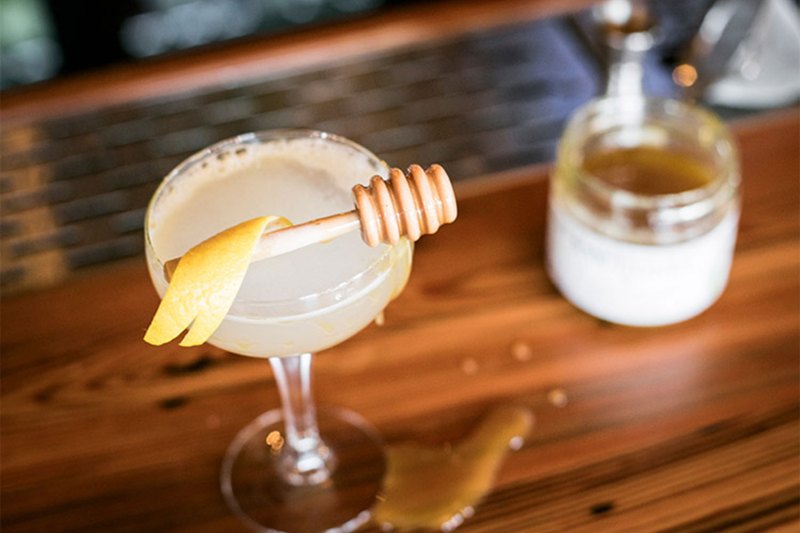
Vermont’s Caledonia Spirits, makers of the honey-based Barr Hill Gin and other spirits, is paying it back to the bee community this September by hosting its annual Bee’s Knees Week. The point of this cocktail fundraiser is to support “organizations that work to protect bees and other pollinators,” according to a statement from the distillery. Since Bee’s Knees Week started back in 2017, the distillery has worked with bars and restaurants around the country to raise over $63,000 by selling Bee’s Knees cocktails for the cause (made with gin, lemon juice, and honey — you can find the recipe here). But obviously things are different this year due to the COVID pandemic, so Caledonia will be changing up its game plan by focusing on home bartenders and social media, in addition to bars and restaurants that remain open for business.
Here’s how things will work this year: From September 18-27, order a Bee’s Knees cocktail from a participating bar, or make one at home. Then share a photo of the cocktail on social media using #beeskneesweek2020, tagging @barrhillgin, and tagging the bar, restaurant, or store where you purchased Barr Hill Gin. It’s as easy as that, and for every qualifying photo posted, Caledonia Spirits will plant ten square feet of bee habitat, ensuring that our little striped friends continue to do what they do best (and perhaps help stave off colony collapse disorder). Also, bars, stores, and restaurants that rack up enough photos to exceed their actual physical square footage will receive a special gift.
“Like everyone else, we have had to adapt during these unprecedented times, but with change comes opportunity – and we’re very excited about our plans for Bee’s Knees Week this year,” said Caledonia Spirits president and head distiller Ryan Christiansen in a prepared statement. “Being able to participate from home is going to get so many more people involved in the cause, and that’s what Bee’s Knees Week is all about. Bees are so essential to our environment yet they face an incredible amount of challenges – whether it’s colony collapse, pesticides, or habitat loss due to overdevelopment. That’s why this year’s initiative will be geared toward planting new bee habitat to help offset some of those losses.”
Here is where you can find participating bars, restaurants, and stores, or sign up for Bee’s Knees Week if you own one of those establishments.



